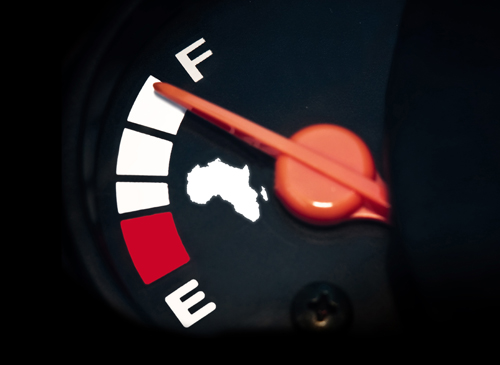
Recognised as the second largest oil and gas firm in Southern Africa, Petromoc, or Petróleos de Moçambique to give it its local name, was formed in 1999 and is Mozambique’s state-owned distributor of petroleum products. Born out of the transformation of the Mozambique National Fuel Company, Petromoc today owns the largest retail network in the country, one that consists of 119 filling stations and supply posts, and 300 local consumer positions.
The company owns and operates storage facilities and pipelines found across all the main Mozambican ports, with said storage facilities including 19 inland and coastal depots which boast a combined storage capacity of around 500,000 cubic metres.
Petromoc markets fuels, oils, grease-oils and lubricants for use in the country’s major industry sectors, these being mining, agriculture and maritime, and is also able to provide customers with complete technical support. The largest supplier of fuel to Mozambique’s leading industrial and commercial companies, Petromoc also provides fuel to a host of neighbouring countries such as Zambia, Zimbabwe, Malawi and the DRC.
In total Petromoc is able to claim annual sales of approximately 407,000 cubic metres of petroleum products, 375,000 cubic metres of which are distributed to Mozambique’s domestic market, which equates to a domestic market share of around 42 percent. Meanwhile, some 33,000 cubic metres end up being supplied within the company’s foreign markets.
It will come as a surprise to few that a company the size of Petromoc comes blessed with significant infrastructure assets from which all of its activities originate. These assets include the Lingamo Oceanic Oil Terminal (IOL), the Beira Oceanic Oil Terminal (IOB) and the Nacala Oceanic Installation (ION).
Located in the port area of Matola city and possessing san installed capacity of 412,000 cubic metres, the IOL facility covers an area of 40 hectares and acts as one of the gateways for the entry of petroleum products into Mozambique. The largest facility of its kind in the country the IOL is linked by pipeline to the fuel terminal through which it receive petroleum products from oil tankers. It handles a range of products including liquefied petroleum gas (LPG), petrol, aviation fuel, kerosene, diesel, fuel oil, various grades of bitumen, and lubricating oils and greases.
At present the IOL is undergoing work that will reshape the complex, increasing its operational capacity, modernising its loading gantries for rail wagons and road tankers, and implementing other projects of importance to improve operational effectiveness. The success of the IOL becomes ever more important when taking into account that it represents a pilot facility for Petromoc’s plans to develop an integrated management system based on the principles of quality, environmental protection and occupational health and safety.
Located in Munhava, the IOB may have a smaller installed capacity, in this case 26,000 cubic metres, but it is responsible for handling massive volumes of fuel thanks to its strategic location that makes it a gateway for the distribution of petroleum products to landlocked neighbouring countries. In order to distribute fuel, and receive and backload calling oil tankers, the terminal relies upon a powerful and modern loading gantry. Meanwhile its link to the Mozambique-Zimbabwe Pipeline Company pipeline gives it a unique opportunity to pump products into Zimbabwe.
The ION also holds a critically important role for both the company and the country, in that it is responsible for the supply of fuels to the northern region of Mozambique. Linked to the fuel terminal by a four kilometre long pipeline, also belonging to Petromoc, the ION is able to receive fuel products and undertake backloading operations. Recently rehabilitated, the pipeline allows the company to pump different petroleum products separately, thus improving their individual integrity and durability.
Designed to have a storage capacity of 45,000 cubic metres, the ION is able to store petrol, kerosene, aviation fuel, diesel, and lubricating oils and greases. As well supplying the domestic market, the terminal is also used as a gateway to landlocked nations such as Zambia and Malawi.
Of course, while the company’s facilities are of huge importance, the work carried out across Petromoc’s operations would not be possible without its workforce. When it comes to its human resources the company’s primary objective revolves around being able to empower human capital through the constant development of a skilled, dynamic and motivated work force.
In its quest to motivate and permanently mobilise its workforce for its cause, Petromoc is in the process of implementing a comprehensive Human Resources Management System. This will consist of recruitment and selection, training and development, performance evaluation and professional careers subsystems, as well as wage administration regulations.
Outside of its internal structure, Petromoc has also spent consideration amounts of time and effort to extend what it describes as its “brand of excellence” to the social, cultural and environmental sectors. Aware of its social responsibilities the company is always striving to act as an agent for sustainable human development, all the while retaining full respect for environmental standards.
Petromoc’s social and environmental responsibility programmes are structured towards continuous and regular activities that support cultural, social, sport, health and environmental undertakings. The company’s efforts have seen it sponsor various national sporting programmes, initiate various awareness campaigns against Malaria, HIV and Poliomyelitis, and lend its support to events related to the development of Mozambique’s national culture and identity.
In aiding the educational needs of the country, Petromoc has contributed towards the rehabilitation of the Bagamoyo Primary School and volunteered to cover the enrolment fees of students who had dropped out due to a lack of financial resources. Elsewhere it was the company’s contributions that saw equipment supplied for an IT room at Liberdade Secondary School, while moves were also made to involve senior staff members in training activities and workshops centred on the themes of corporate social responsibility and combating HIV.
Such corporate social responsibility efforts continue to form a core part of Petromoc’s existence, while at the same time the company remains as committed as ever to achieving its strategic goals, these being regional expansion, the maximisation of its logistics network and the further diversification of its energy portfolio by developing new products and services that add value and stability to the business.
Written by Will Daynes, research by Abi Abagun
DOWNLOAD
 Petromoc-Africa-O&G-Feb14-Bro-s.pdf
Petromoc-Africa-O&G-Feb14-Bro-s.pdf













